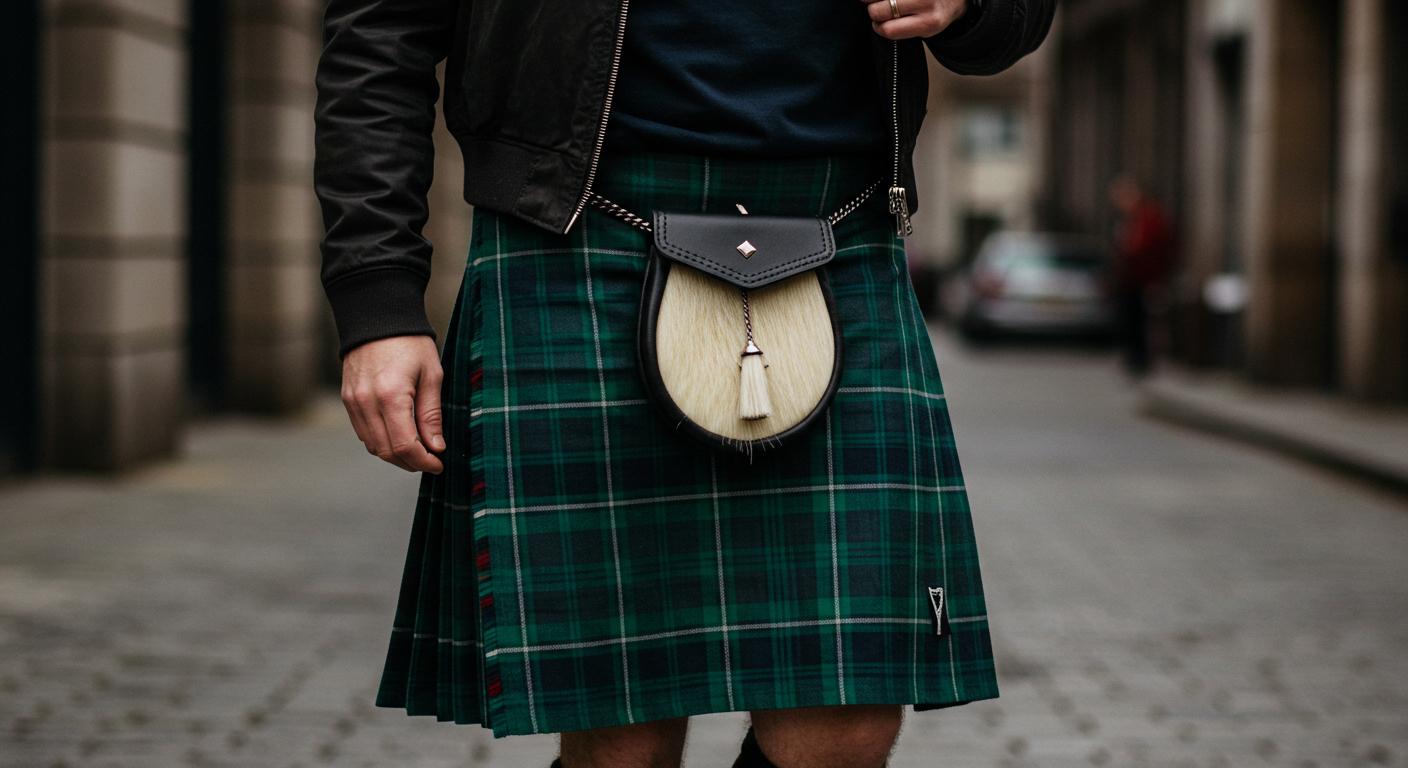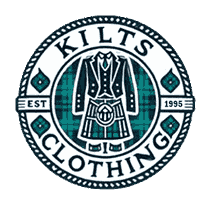Customizing Your Irish Kilt: From Embroidery to Unique Touches

The Irish kilt is not just a garment; it's a symbol of pride, heritage, and tradition. While many artisans create kilts in standard designs, the beauty of this iconic piece of clothing lies in its versatility. There's plenty of room for customization. Whether you're preparing for a wedding, celebrating an important event, or want to create a kilt that genuinely reflects your personality, customizing your Irish kilt is an exciting way to make it uniquely yours. From intricate embroidery to subtle, personalized details, here's a guide to help you customize your kilt and add those special touches.
Why Customize Your Irish Kilt?
Before diving into the details of how to personalize your kilt, it's worth considering why you might want to customize one in the first place.
Cultural Significance
The Irish kilt, though less traditional than its Scottish counterpart, still carries deep cultural meaning. Many wear it to celebrate Irish roots, and customizing a kilt makes that connection even more personal. Whether you're incorporating symbols of Irish heritage or choosing a particular tartan to represent your family's history, a customized kilt becomes a more meaningful garment.
Personal Expression
A custom kilt allows you to reflect your style while staying true to the garment's traditional elements. Consider adding personal embroidery or choosing a color palette that suits your preferences. Customizing your kilt lets you express individuality, making it more than just an item of clothing—it becomes a statement.
Special Occasions
Customized kilts are ideal for significant life events. If you're getting married, celebrating a milestone birthday, or attending a major family gathering, a personalized irish kilt men and women can serve as a meaningful keepsake. You can even use the opportunity to commemorate these moments through embroidery or custom detailing.
Step 1: Choosing the Right Fabric and Tartan
The first step in customizing your kilt is deciding on the fabric and tartan. These are the foundational elements of any kilt, and they set the tone for the entire design.
Selecting the Fabric
Irish kilts come in a variety of fabrics, each offering different benefits. Wool is the most traditional material used for kilts, and it provides durability, warmth, and a luxurious feel. If you're looking for something lighter, you can choose cotton or linen, which are perfect for warmer climates or more casual events.
When choosing a fabric, think about your comfort level and the purpose of the kilt. For a formal event, such as a wedding, wool is a classic choice. At the same time, cotton is an excellent option for casual wear or festivals.
Tartan Options
Though Irish kilts do not have the same clan system as Scottish kilts, they still feature tartans that can represent regions, counties, or even personal history. The tartan you choose will give your kilt its unique look. You can select from various traditional Irish tartans, such as the "Green Irish" tartan, or even opt for a custom tartan if you want something completely one-of-a-kind.
Suppose you're looking for something deeply personal. In that case, you should design your tartan, incorporating specific colors or patterns that have meaning to you or your family. Many kilt makers offer custom tartan design services that allow you to bring your vision to life.
Step 2: Embroidery – Adding Personal Details
Embroidery is one of the most popular ways to customize your kilt. It allows you to add personal symbols, family crests, or traditional Irish designs that elevate the garment.
Types of Embroidery
When it comes to embroidery, the options are virtually limitless. Some popular choices include:
- Celtic Knots: People deeply tie these intricate, looped patterns to Irish culture and embroider them on various parts of the kilt. Whether you choose a subtle design along the hem or a bold statement piece on the back, Celtic knots are timeless.
- Family Crests: Adding your family crest or coat of arms is a perfect way to personalize your kilt. These symbols often tell a story of lineage and heritage, making them a meaningful addition.
- Irish Symbols: People frequently incorporate common symbols like shamrocks, the harp, or the Claddagh ring into kilt embroidery. These symbols carry significant cultural meaning and can appear in subtle or bold ways, depending on your preference.
Placement of Embroidery
The placement of the embroidery plays a critical role in achieving the right balance between personal flair and maintaining the kilt's traditional aesthetic. Popular spots include:
- Hemline: Adding small, delicate embroidery around the hemline can enhance the look without being too overpowering.
- Waistband: For a more refined touch, you can opt to add embroidery near the waistband, making it visible only when you move or shift.
- Back of the Kilt: Larger designs, such as a family crest or large Celtic knot, can be placed at the back of the kilt, creating a bold and personal statement.
You can work with a professional embroiderer who specializes in custom designs to help bring your vision to life.
Step 3: Incorporating Unique Touches – Kilt Pins, Sporrans, and More
Once you've decided on the fabric and embroidery, it's time to add the finishing touches. These unique details will enhance the kilt's overall look and reflect your taste.
Kilt Pin
The kilt pin serves both a functional and decorative purpose. Not only does it help keep the fabric in place, but it also adds an elegant touch. You can customize your kilt pin by choosing one that reflects your style. For example, you might select a pin featuring your family's coat of arms, a Celtic design, or even your initials.
Sporran Customization
The sporran is the pouch worn on the front of the kilt. Traditionally used to carry small items, it also serves as an essential accessory. Sporrans customization in various ways—select from different materials like leather or fur, or even add embroidery or tassels to make it stand out. A custom sporran is an excellent way to complete your kilt while also adding a personal touch.
Kilt Lining
A lesser-known but impactful customization is adding a unique lining to your kilt. This feature is hidden on the inside but provides a subtle burst of color or pattern when the kilt is in motion. You could choose a tartan lining that complements the main fabric or go for a completely different color or pattern to give it an unexpected flair.
Belt and Buckles
Your kilt's belt and buckle also offer an opportunity for customization. You can choose custom engraved buckles, whether you want them to feature your initials, a family crest, or another symbol of importance. The belt itself can also be made from a range of materials and colors, offering you the flexibility to match or contrast with the rest of the outfit.
Step 4: Tailoring the Perfect Fit
To ensure your customized kilt fits perfectly, it's essential to have it tailored. Proper tailoring guarantees that the kilt sits comfortably on your waist and hangs correctly at the knee. It also ensures the pleats and overall structure are balanced and flattering.
When working with a irish kilts for sale maker, ensure that you communicate clearly about your desired fit. It is imperative if you are adding additional features like embroidery, as the extra weight or design elements may require slight adjustments for comfort.
Step 5: Caring for Your Customized Irish Kilt
A customized kilt represents a personal investment in both style and heritage, so it's essential to care for it properly.
Cleaning and Maintenance
Irish kilts, particularly those with intricate embroidery or custom details, should be dry-cleaned to preserve their fabric and embroidery. Avoid machine washing, as it can damage delicate threads or fabrics. If your kilt comes from wool, always choose dry cleaning to maintain its shape and texture.
Storage
When you're not wearing your kilt, store it in a cool, dry place. Use a garment bag to protect it from dust and dirt. Never store your kilt in direct sunlight, as this can cause the colors to fade.
Conclusion:
Customizing your Irish kilt offers a beautiful opportunity to create a piece that's not only steeped in tradition but also uniquely yours. Whether you're adding embroidery, personal symbols, or unique accessories, a custom kilt can reflect your personality and heritage in ways that a standard kilt simply can't. From special occasions to everyday wear, a customized Irish kilt is a timeless garment that tells your story. Embrace the art of customization and design a kilt that's truly one-of-a-kind.


